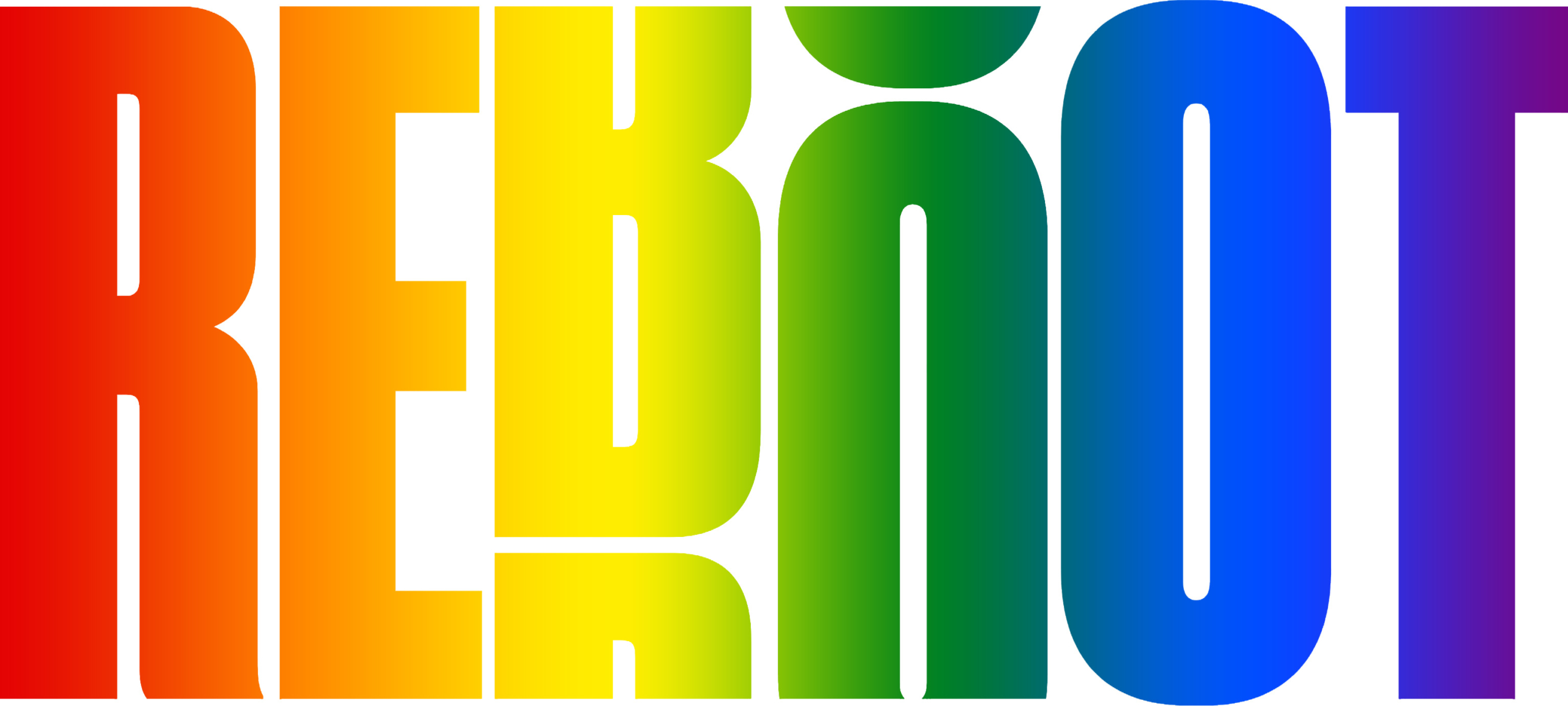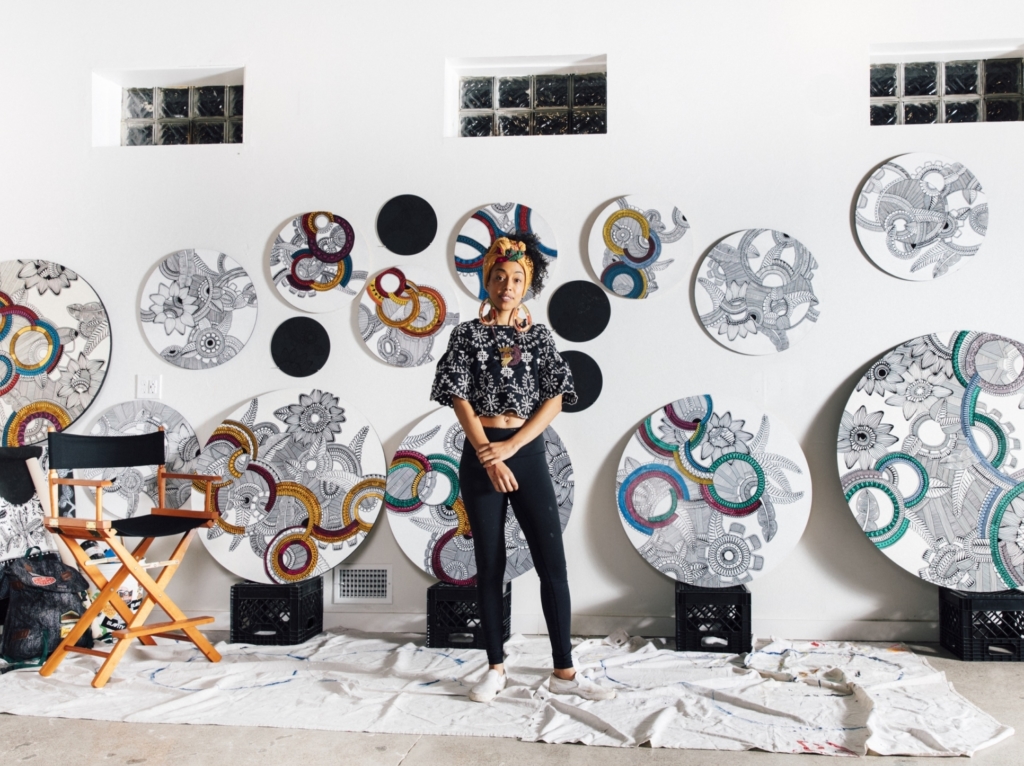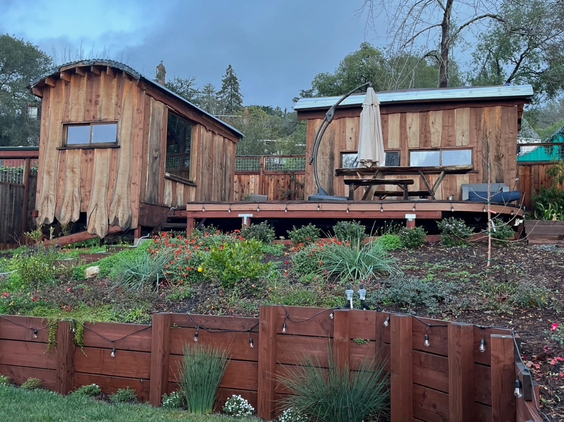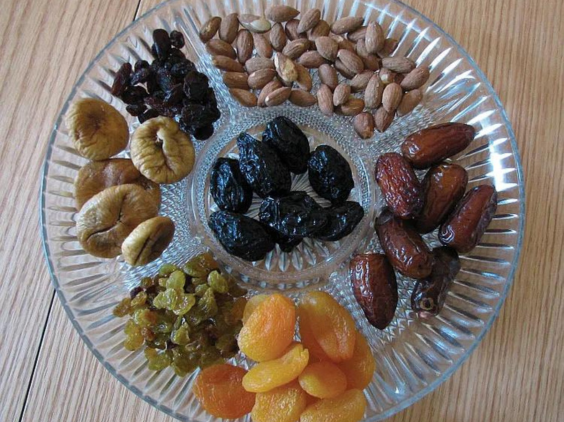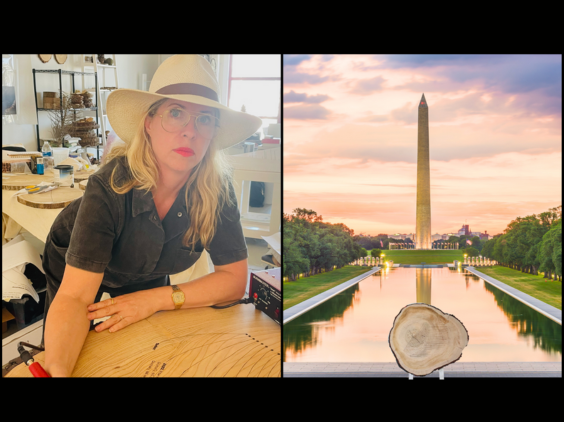Remembering the Trees: Artistic Celebration of Tu-Bishvat
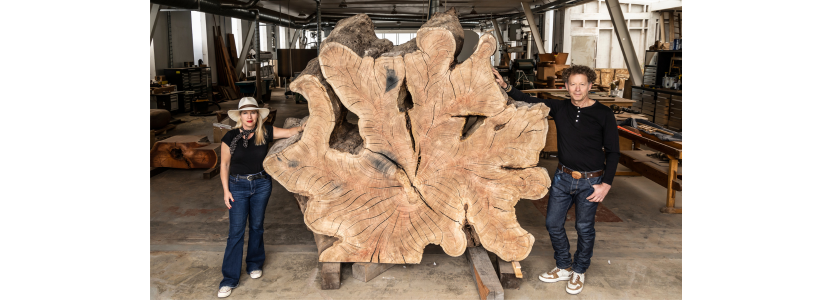
Remembering the Trees: An Artistic Celebration of Tu-Bishvat
By Tiffany Shlain and Ken Goldberg
Tiffany Shlain and Ken Goldberg watched the fires in Los Angeles with heartbreak for all the people losing their homes and possessions. They also felt a deep sadness for all the trees lost, trees with all their embedded histories, also lost forever. Shlain and Goldberg have spent the past few years tracing history through the rings of massive, reclaimed tree rings. As the Jewish festival of the trees Tu BiShvat approaches, they reflected on other histories trees could have witnessed, etching the historical and contemporary questions that have catalyzed the quest for knowledge into the tree rings. Their pieces are exhibited in Getty’s PST Art & Science Collide exhibition at the Skirball Cultural Center: Ancient Wisdom for a Future Ecology: Trees, Time & Technology. Their art will also be featured during Frieze Art Fair.
Tiffany
In addition to all the heartbreak we have felt seeing so many people lose their homes and their possessions, I have been thinking about all the lost trees. So many trees with all their embedded histories, also lost forever.
I grew up near Muir Woods in Northern California, home to some of the oldest trees in the world. The park has a tree ring timeline at the entrance that always left me gobsmacked. Its rings are marked with significant historical events, usually very patriarchal, colonial, and Christian. During Covid, I started imagining other histories trees could have witnessed, and created a feminist history tree ring called Dendrofemonology, distilling 50,000 years of feminist history into 32 points. Both reimagining how long trees lived and playing with the science of tree ring dating, called dendrochronology, then tackled many other subjects in this new body of work with more tree ring sculptures.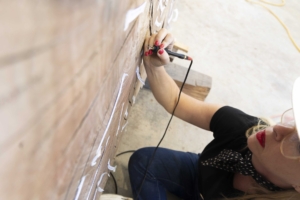 I work with salvaged trees reclaimed after they have fallen or from a fire, and burn the letters onto the wood using pyrography, with a fire-tipped pen.
I work with salvaged trees reclaimed after they have fallen or from a fire, and burn the letters onto the wood using pyrography, with a fire-tipped pen.
Ken
In the summer of 2022, when Tiffany was creating her first feminist history tree ring, I was working on a project with my students and researchers from MIT and Google to develop new machine learning techniques for classifying urban trees from satellite images in Los Angeles. Tiffany and I received email out of the blue from Selma Holo, an acclaimed curator in Los Angeles who knew about our individual art projects and collaborations. Selma had curated my first exhibit in LA in 1993. Thirty years later, she was working with the Skirball Cultural Center on an exhibition for the Getty Museum’s triennial art event, PST ART, where 50+ museums and galleries across LA present artwork on a common theme.
Tiffany
In 2024/25, the theme would be “Art and Science Collide.” Selma suggested that the two of us collaborate to jointly propose an exhibit on this theme for the Skirball Cultural Center, a complex of Jewish cultural contemporary galleries just down the hill from the Getty Museum on the Pacific coast.
Ken
We jumped at the chance to work together on this. Tiffany and I met in 1997 at a lecture by Leonard Shlain (Tiffany’s father) on his bestselling book, Art and Physics. Since then, we’d been working individually in tech and art for several decades, and we had collaborated on two art installations and co-written films, but this was our first chance to collaborate on a large-scale museum exhibition. We pulled out a blank sheet of paper: Art, Science, Trees, Time, Jewishness…and drafted a proposal for the exhibition Ancient Wisdom for a Future Ecology: Trees, Time, and Technology.
Tiffany
We started brainstorming topics. We knew we had to include The Tree of Knowledge both in the biblical sense and the essential Jewish quality of questioning everything in the pursuit of knowledge. Visiting a salvaged lumber yard in Petaluma, we spotted a massive salvaged stump from a 300-year-old eucalyptus tree that weighed 7000 pounds and was 8 feet in diameter. The gnarled back looked literally like ideas wrestling with each other and then the other side with the smooth surface looked both like a hand being raised and a brain. Different from my previous timelines, we decided to fill it with the historical and contemporary questions that have catalyzed the quest for knowledge.
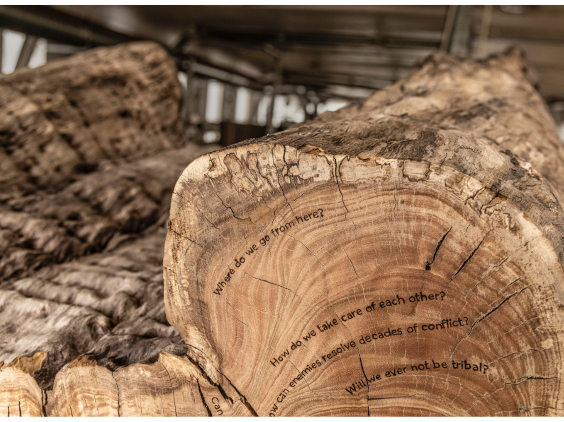
We spent two years thinking of questions and distilled them down to 160, ranging from ancient history’s “Can we create fire?” to today’s “Can a machine be truly intelligent?” “Can we stop global warming?” and also questions like “Can we ever resolve decades long conflicts?” and “Where do we go from here?” Then I burned them onto the flat milled surface on one side.
Of the 10 artworks in the exhibition, two are particularly Jewish: DendroJudaeology: A Timeline of the Jewish People; and Two Notes, a sculpture that represents the famous advice of Rabbi Simcha Bunam Bonhart of Przysucha, about carrying two notes in your pocket: one saying “The world was made for me,” and the other, “I am but dust and ashes.” The title of the video artwork about shade disparity, Speculation, Like Nature, Abhors a Vacuum, grew from Ken’s work on aerial tree classification and references Ed Ruscha’s LA street videos. It comes from a quote from Spinoza, quoting Aristotle. The other artworks also explore ideas around artificial intelligence, the history of history, the history of California, and the history of mathematical equations. We also have an AI component where people can make tree tributes based on trees in front of their homes. This takes on a new resonance now with so many people who lost their home and the trees around it.
Creating this exhibition these last several years, we’ve spent a lot of time in the LA area and have a new appreciation for it and the arts community. In addition to thinking about Joni Mitchell’s song “California,” I keep thinking of the line from “Big Yellow Taxi”: “You don’t know what you’ve got til it’s gone.”
Ancient Wisdom for a Future Ecology: Trees, Time & Technology will be on exhibit at the Skirball through March 2, 2025. Sign up here to get notified about Shlain and Goldberg’s LA events and to stay posted on where the exhibition will travel next.
About the artists:
Partners in life and frequent creative collaborators, Bay Area-based artists Tiffany Shlain and Ken Goldberg have worked together on art projects and numerous documentaries, including their acclaimed Sundance film, The Tribe, “an unauthorized, unorthodox … history of the Jewish people and the Barbie doll,” which premiered at Sundance in 2006, won multiple awards, and continues to be screened worldwide. They also co-wrote the Emmy-nominated series The Future Starts Here, which includes episodes “Why We Love Robots,” “Robots, Botox, and Google Glass,” and “Tech Shabbats.” Goldberg and Shlain have also worked independently for decades as artists. Their artwork has been shown at the Whitney, MoMA, and the Venice Biennale. Shlain is an interdisciplinary artist whose works in film, sculpture, and performance explores ideas in feminism, neuroscience, philosophy, technology, and nature. Founder of the Webby Awards, she began reimagining tree ring histories as sculpture during the pandemic. Goldberg is an artist and professor of engineering and leads a robotics research lab at the University of California, Berkeley, where he questions the boundaries between the digital and natural worlds. Find out more at tiffanyshlain.com/goldberg.berkeley.edu and Ancientwisdom.art.
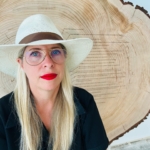
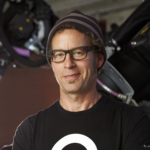
*Exhibit Photos By Stefanie Atkins Schwartz
